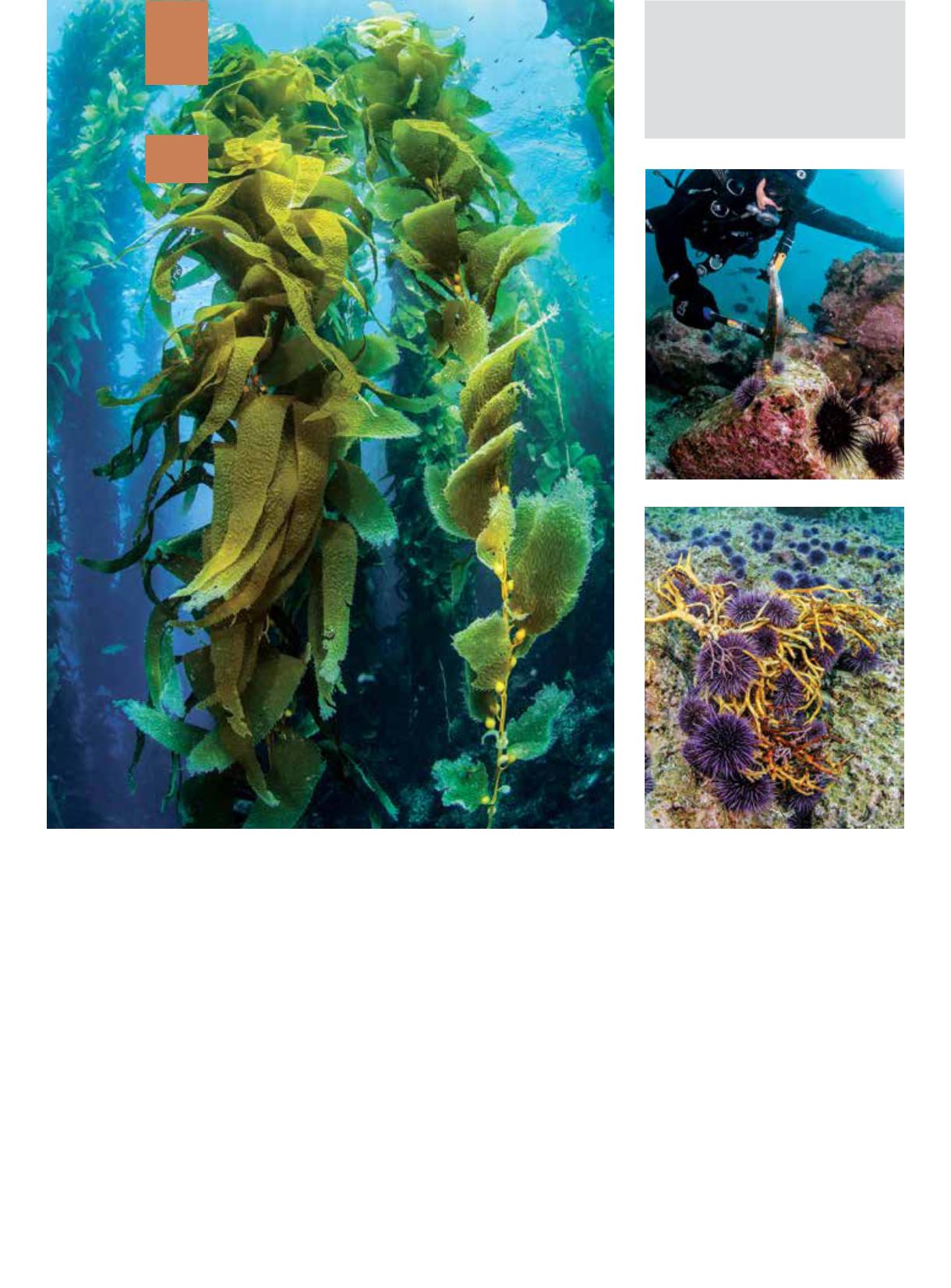
110
|
SPRING 2014
LEARN MORE
For more information about the kelp
restoration project, go to
or
.
A
t first, the dive day seems like any other.
We meet a small bunch of enthusiastic
divers on the dock, load our gear onto
the boat and jealously check out each
other’s equipment. We jokingly express
concern about the marine forecast, which has accurately
predicted near-perfect conditions. Once we exit Los
ngeles harbor and start motoring north, however, the
atmosphere becomes all business. Clipboards emerge,
foreheads furrow, and the other passengers begin to
discuss the day’s goals in earnest.
Given the pedigree of these divers and the problem
at hand, we should have expected as much. Our group
consists of scientists representing The Bay Foundation,
Los Angeles Waterkeeper and the National Oceanic and
Atmospheric Administration (NOAA) — along with two
photographers who quickly decide that their wisest move
is to keep quiet and try to learn something. Tom Ford,
the director of marine programs for The Bay Foundation
and one of the leaders of the reforestation effort since
1998, completes his dive briefing and turns to us.
“See that kelp bed over there?” he asks, pointing
T e x t a n d P h o t o s b y A n d y a n d A l l i s o n S a l l m o n
WATER PLANET
How to (Re)Build a Kelp Forest
Restoration of a California icon
Clockwise: A healthy
kelp forest can
harbor all manner of
marine life. A diver
works to cull purple
urchins within a
barren near Palos
Verdes. Purple
urchins devour a
kelp holdfast.


